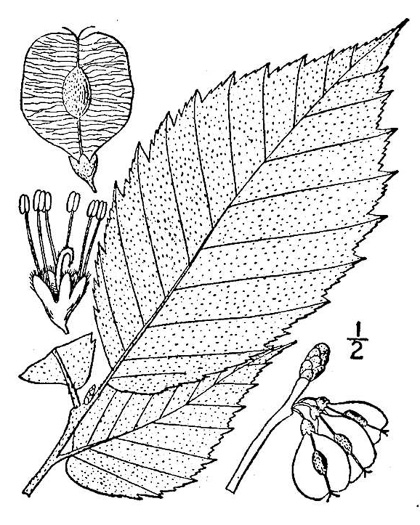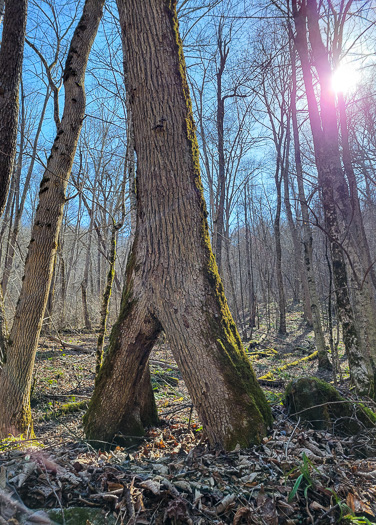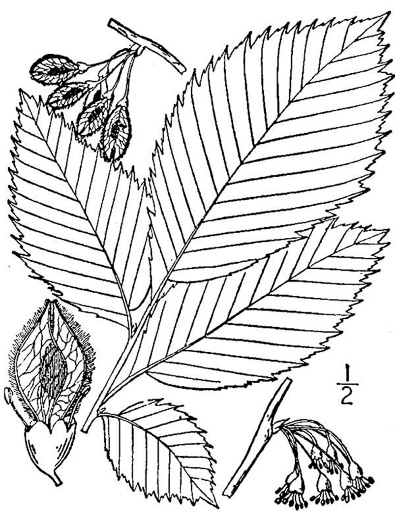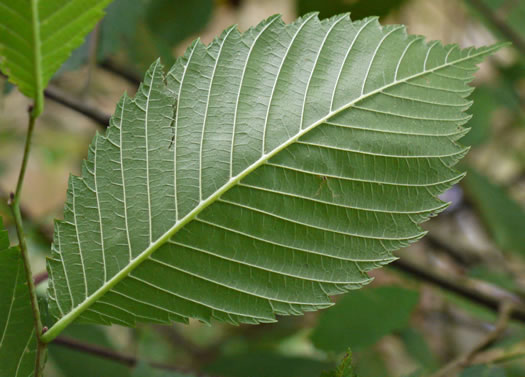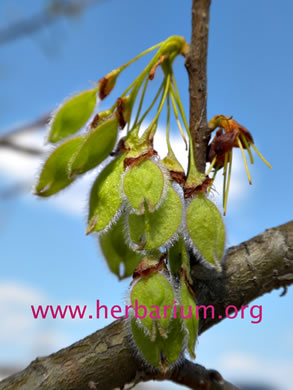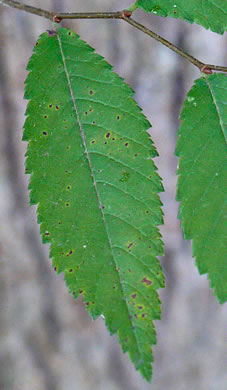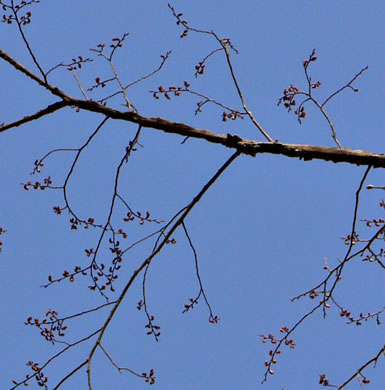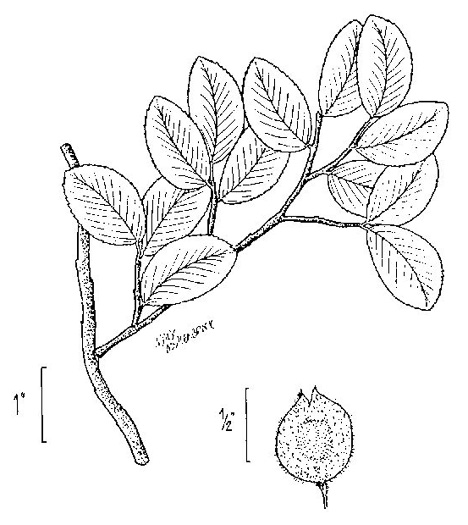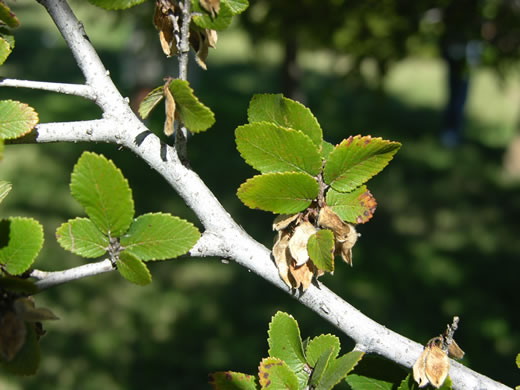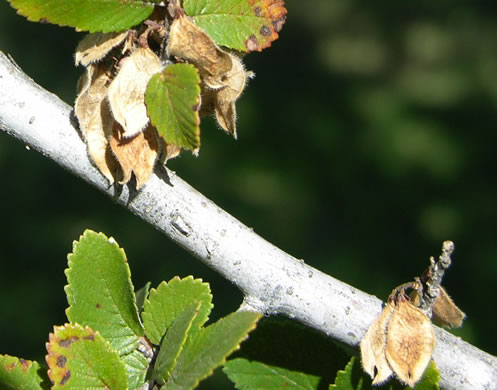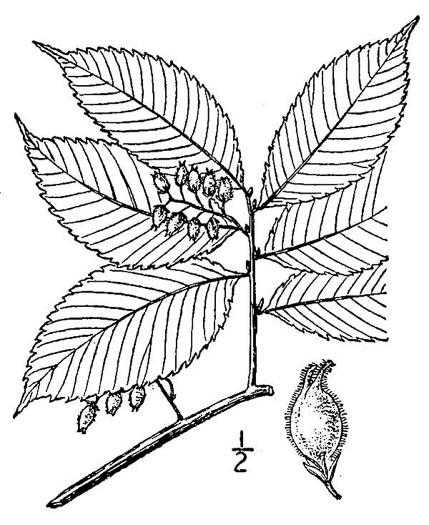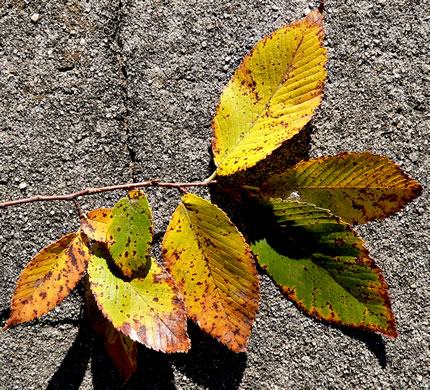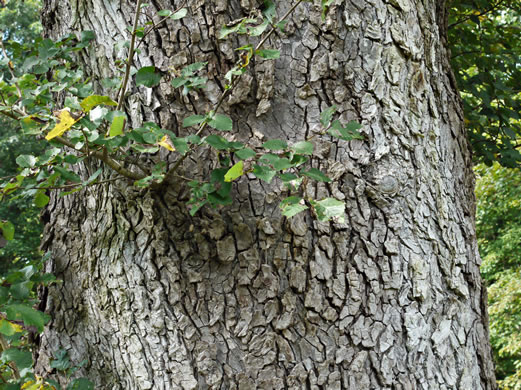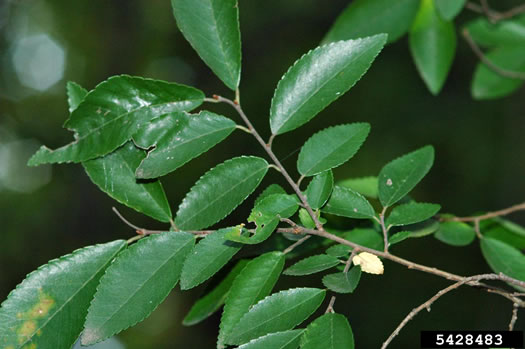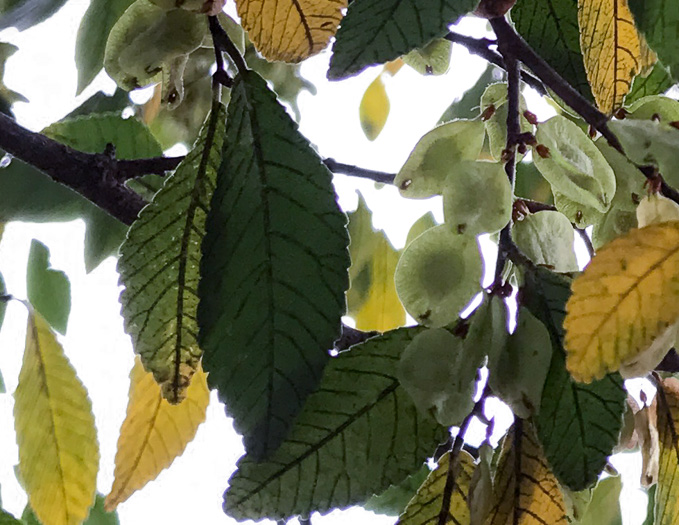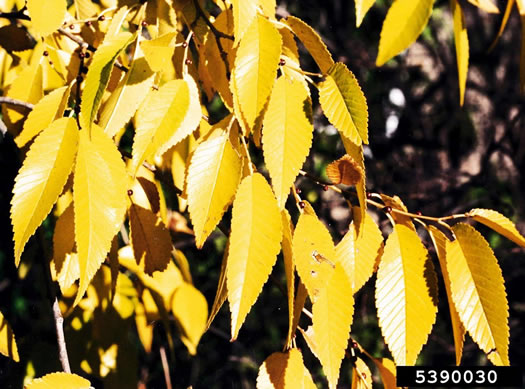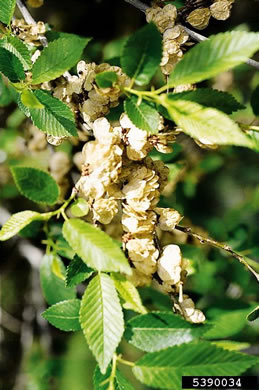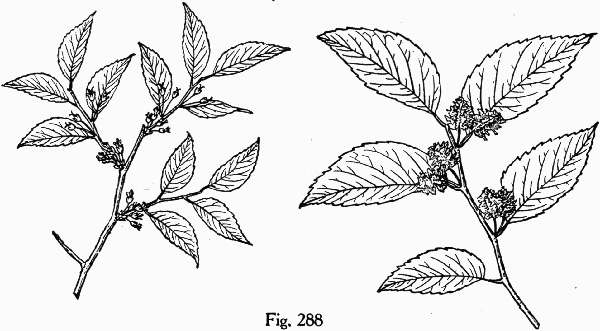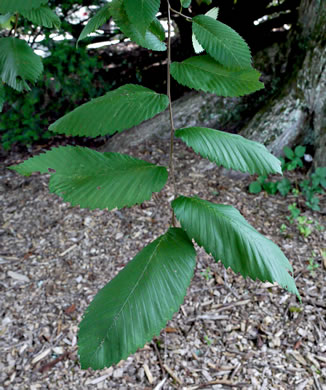Hovering over an image will enlarge it and point out features (works better on desktop than on mobile).
![]() A camera indicates there are pictures.
A camera indicates there are pictures.
![]() A speaker indicates that a botanical name is pronounced.
A speaker indicates that a botanical name is pronounced.
![]() A plus sign after a Latin name indicates that the species is further divided into varieties or subspecies.
A plus sign after a Latin name indicates that the species is further divided into varieties or subspecies.
Most habitat and range descriptions were obtained from Weakley's Flora.
Your search found 12 taxa in the family Ulmaceae, Elm family, as understood by Weakley's Flora.

![]()
![]() Common Name:
Slippery Elm, Red Elm
Common Name:
Slippery Elm, Red Elm
Weakley's Flora: (4/24/22) Ulmus rubra FAMILY: Ulmaceae
SYNONYMOUS WITH PLANTS National Database: Ulmus rubra FAMILY: Ulmaceae
SYNONYMOUS WITH Vascular Flora of the Carolinas (Radford, Ahles, & Bell, 1968): Ulmus rubra 056-01-001 FAMILY: Ulmaceae
Habitat: Moist to fairly dry calcareous forests, rich bottomlands, rich cove forests in the low Mountains
Common (uncommon to rare in Coastal Plain)
Native to the Carolinas & Georgia

![]()
![]() Common Name:
American Elm, White Elm
Common Name:
American Elm, White Elm
Weakley's Flora: (4/24/22) Ulmus americana var. americana FAMILY: Ulmaceae
INCLUDED WITHIN PLANTS National Database: Ulmus americana FAMILY: Ulmaceae
INCLUDED WITHIN Vascular Flora of the Carolinas (Radford, Ahles, & Bell, 1968): Ulmus americana 056-01-002 FAMILY: Ulmaceae
Habitat: Swamps, bottomland forests, moist slopes, especially on relatively or strongly nutrient-rich substrates
Common
Native to the Carolinas & Georgia

Common Name: Florida Elm
Weakley's Flora: (4/24/22) Ulmus americana var. floridana FAMILY: Ulmaceae
INCLUDED WITHIN PLANTS National Database: Ulmus americana FAMILY: Ulmaceae
INCLUDED WITHIN Vascular Flora of the Carolinas (Radford, Ahles, & Bell, 1968): Ulmus americana 056-01-002? FAMILY: Ulmaceae
Habitat: Shell middens, other calcareous forests
Uncommon in Coastal Plain
Native to the Carolinas & Georgia

![]()
![]() Common Name:
Winged Elm
Common Name:
Winged Elm
Weakley's Flora: (4/24/22) Ulmus alata FAMILY: Ulmaceae
SYNONYMOUS WITH PLANTS National Database: Ulmus alata FAMILY: Ulmaceae
SYNONYMOUS WITH Vascular Flora of the Carolinas (Radford, Ahles, & Bell, 1968): Ulmus alata 056-01-003 FAMILY: Ulmaceae
Habitat: Rock outcrops, dry and mesic forests and woodlands, bottomlands, old fields, disturbed areas
Common (rare in Mountains)
Native to the Carolinas & Georgia

![]()
![]() Common Name:
Cedar Elm
Common Name:
Cedar Elm
Weakley's Flora: (4/24/22) Ulmus crassifolia FAMILY: Ulmaceae
SYNONYMOUS WITH PLANTS National Database: Ulmus crassifolia FAMILY: Ulmaceae
Habitat: Bottomland forests, hardwood flatwoods, prairies with tight soils; rarely river bluffs and ravines
Native: south & west of the Carolinas & Georgia

![]() Common Name:
September Elm, Rock Elm
Common Name:
September Elm, Rock Elm
Weakley's Flora: (4/24/22) Ulmus serotina FAMILY: Ulmaceae
SYNONYMOUS WITH PLANTS National Database: Ulmus serotina FAMILY: Ulmaceae
Habitat: Dry-mesic to mesic upland forests, bottomland and riparian forests, stream banks, bluffs, lake and pond margins, flatwoods; especially over limestone
Rare
Native to Georgia & possibly North Carolina

![]() Common Name:
Wych Elm, Scotch Elm
Common Name:
Wych Elm, Scotch Elm
Weakley's Flora: (4/24/22) Ulmus glabra FAMILY: Ulmaceae
SYNONYMOUS WITH PLANTS National Database: Ulmus glabra FAMILY: Ulmaceae
Habitat: Suburban woodlands
Non-native: Europe

![]() Common Name:
Lacebark Elm, Chinese Elm
Common Name:
Lacebark Elm, Chinese Elm
Weakley's Flora: (4/24/22) Ulmus parvifolia FAMILY: Ulmaceae
SYNONYMOUS WITH PLANTS National Database: Ulmus parvifolia FAMILY: Ulmaceae
Habitat: Disturbed secondary forests, roadsides, fencerows, old fields, other disturbed areas
Rare
Non-native: China & Japan

![]()
![]() Common Name:
Siberian Elm, Dwarf Elm
Common Name:
Siberian Elm, Dwarf Elm
Weakley's Flora: (4/24/22) Ulmus pumila FAMILY: Ulmaceae
SYNONYMOUS WITH PLANTS National Database: Ulmus pumila FAMILY: Ulmaceae
Habitat: Roadsides, disturbed areas
Rare
Non-native: Asia

![]() Common Name:
Planer-tree, Water-elm
Common Name:
Planer-tree, Water-elm
Weakley's Flora: (4/24/22) Planera aquatica FAMILY: Ulmaceae
SYNONYMOUS WITH PLANTS National Database: Planera aquatica FAMILY: Ulmaceae
SYNONYMOUS WITH Vascular Flora of the Carolinas (Radford, Ahles, & Bell, 1968): Planera aquatica 056-02-001 FAMILY: Ulmaceae
Habitat: River swamps where flooded (often to depths of 1-2 m) in the winter
Common in Coastal Plain of GA & SC, uncommon in NC
Native to the Carolinas & Georgia

Common Name: Japanese Zelkova
Weakley's Flora: (4/14/23) Zelkova serrata FAMILY: Ulmaceae
SYNONYMOUS WITH PLANTS National Database: Zelkova serrata FAMILY: Ulmaceae
Habitat: Planted frequently for ornament, persisting or spreading by seeding down
Waif(s)
Non-native: China, Japan & Korea

![]() Common Name:
English Elm, English Cork Elm
Common Name:
English Elm, English Cork Elm
Weakley's Flora: (2/10/25) Ulmus procera FAMILY: Ulmaceae
INCLUDED WITHIN PLANTS National Database: Ulmus procera FAMILY: Ulmaceae
Waif(s)
Non-native: Europe
Your search found 12 taxa. You are on page PAGE 1 out of 1 pages.

